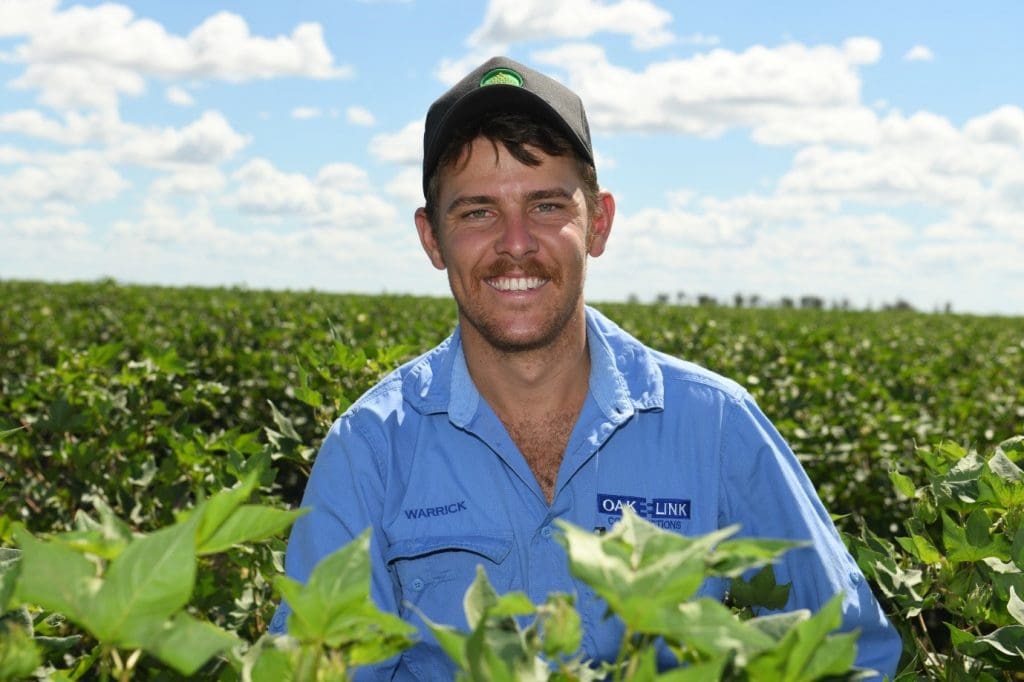
Central Queensland farmer, Warrick Stent-Smith, successfully grew dryland cotton for the first time last season.
A FIRST try at dryland cotton has proved successful for Central Queensland grower, Warrick Stent-Smith, on his farm, “Roper View”, north-east of Emerald.
Mr Stent-Smith said he normally grew wheat, sorghum, chickpeas and mung beans but last season decided to put in some dryland cotton.
“We started thinking about cotton seriously when we had an early spring rain. We had a full profile come November. Sorghum, at that stage, wasn’t worth a lot of money. We could have left it fallow but that’s no fun if it keeps raining. So, we decided to go with cotton,” he said.
Mr Stent-Smith said the upside of cotton was a major reason why they went to the crop.
“A lot of your costs come at the end of the crop so if you don’t get any more rain after planting, it is not a huge cost.
“There’s a massive upside compared to sorghum even with a really good crop and good prices. Whereas the upside, if you get good prices and yield with cotton, make it worth having a go.”
Mr Stent-Smith said he asked a lot of questions of local dealers and friends who had grown cotton.
“I used to think that cotton was a complicated crop. It was always the irrigators’ crop and we never really went near it,” he said
But after growing it for the first time this season, he found cotton to be a relatively easy crop to manage.
“There are a few things you have to do right. Firstly, it’s critical to have a good agronomist and good advice on hand in the way of local suppliers and farmers. Secondly, seeding rates and precision planting is critical to success. Thirdly, you need to spray at the right time.
“The rest of it is pretty straightforward. You just need to contract pick and hope the price is good.”
The cotton was planted into an area that had grown chickpeas immediately before.
“I think one of the great advantages of cotton is you can keep a paddock clean with the in-crop sprays (of Roundup). We’ve had a fair bit of in-crop rain so it’s is a great way to keep the paddock clean,” he said.
“The paddock used to have a real problem with summer grasses but it’s been kept under control this summer because we hit it prior to planting and then with three in-crop sprays.”
In contrast, some other country on the property coming out of chickpeas had multiple fallow herbicide applications across the summer.
“On those paddocks I am up to six sprays because of the wet season.”
Mr Stent-Smith said the benefits of Bollgard 3 cotton had made it more attractive for dryland growers.
“I think one of the big keys is the extension of the planting window. If you get a full profile in November, you’ve still got to the end of December to plant, so it is a good option,” he said.
“Generally we get our rain in January, February and even into March so you are more likely to grow a successful cotton crop in those wetter months.”
The cotton was planted in a double-skip formation with one-metre centres with two rows in and two rows out.
Mr Stent-Smith said the season was generally favourable with over 100 millimetres of in-crop rainfall.
He said the end-point royalty scheme from Monsanto also helped dryland growers manage their risk.
“This has made it attractive for dryland growers to plant. There is also an incentive (from CSD) that you can get the seed back if you have a complete failure.”
Sources: CSD, Monsanto, Acres of Opportunity

HAVE YOUR SAY